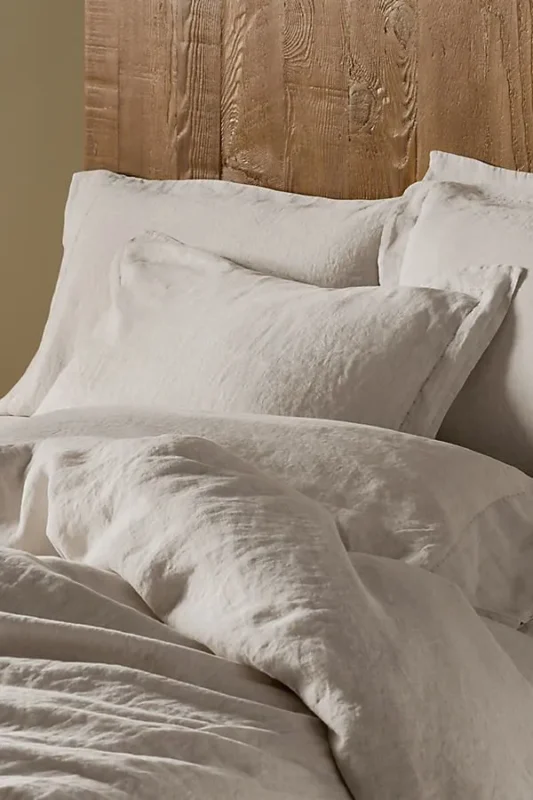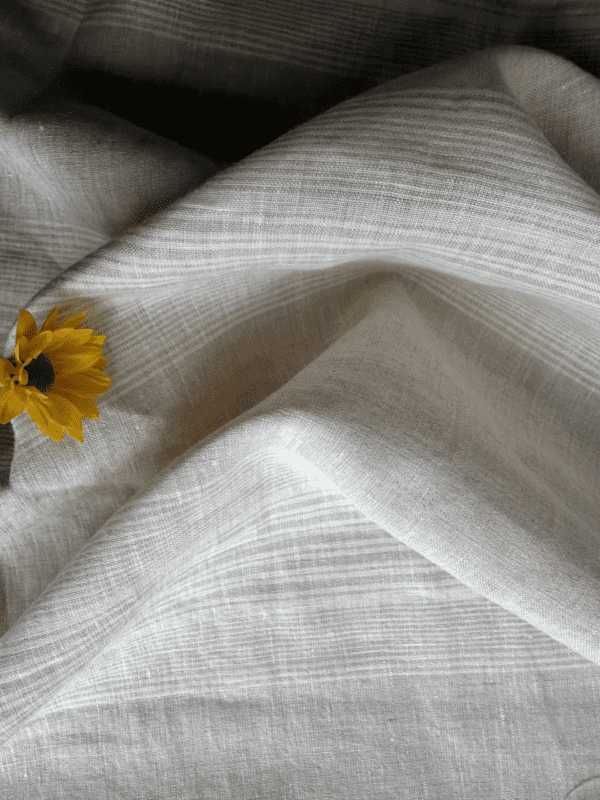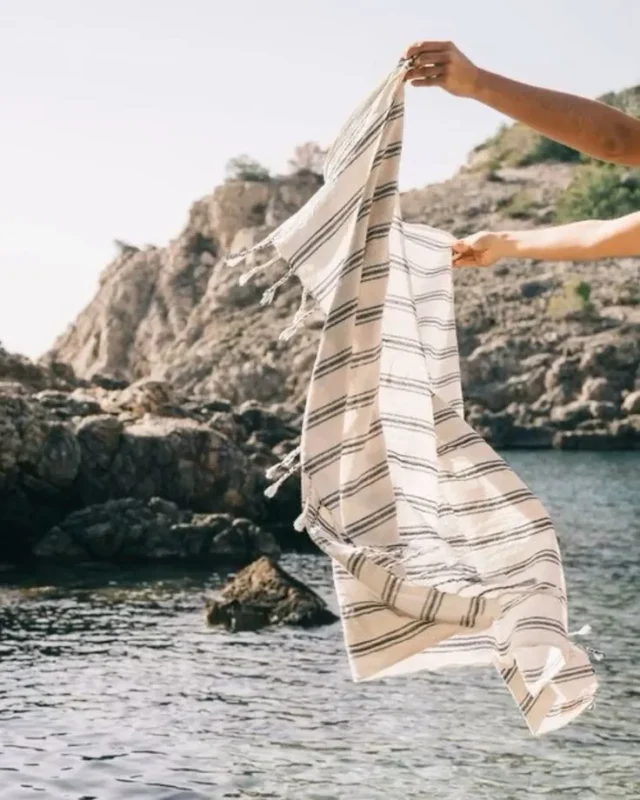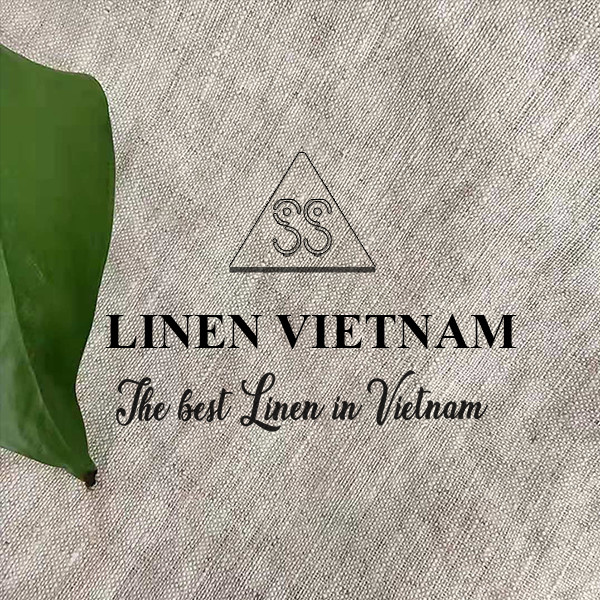Uncategorized
WHY DOES LINEN WRINKLE EASILY? CAUSES AND SOLUTIONS
Linen is one of the most luxurious and beloved fabrics in both fashion and interior design. It offers comfort, breathability, and an eco-friendly appeal.
However, one of linen’s most noticeable characteristics is its natural tendency to wrinkle. While these wrinkles can add a rustic and sophisticated charm, they can also be seen as a downside if not cared for properly.
So why does linen wrinkle so easily? How can you minimize wrinkles? And what type of linen should you choose for both beauty and durability? Let’s explore these aspects in detail.
Table of Contents
Why does linen wrinkle easily?
The origin and structure of linen fibers
Linen is a plant-based fabric made from the fibers of the flax plant. Flax fibers are naturally stiff, less elastic, and have low flexibility. When linen fabric is folded, pressed, or crumpled, the fibers do not have the ability to return to their original state as easily as fabrics with higher elasticity. This is the primary reason why linen wrinkles more than many other fabrics.
The wrinkling of linen is a natural result of its pure, organic material. While wrinkles are inevitable, they also contribute to linen’s relaxed, effortless elegance. Instead of resisting every crease, linen lovers often embrace them as part of the fabric’s unique aesthetic.
The natural properties of linen
All natural fabrics tend to wrinkle, and linen is no exception. However, different types of natural fibers wrinkle to varying degrees:
- Silk: Thin and highly prone to wrinkling, silk is also delicate and requires careful maintenance. Hand washing and avoiding harsh chemicals are necessary to preserve its quality.
- Cotton: Wrinkles less than linen but still creases easily. Cotton fibers are softer and more pliable, making them less durable compared to linen.
- Linen: Naturally wrinkles in a way that enhances its rustic elegance. Blended linen fabrics (such as those mixed with cotton or synthetic fibers) wrinkle less but may lose some of linen’s natural advantages, such as breathability and moisture absorption.
Pure linen vs. Blended linen
If a linen fabric does not wrinkle, it has likely been blended with synthetic fibers such as polyester, viscose, or nylon. While blending reduces wrinkles and makes the fabric smoother, it also alters some of linen’s essential qualities:
- Advantages of blended linen: Smoother surface, fewer wrinkles, and easier maintenance.
- Disadvantages: Reduced breathability, lower moisture absorption, and a less natural feel. Synthetic fibers can also make the fabric feel warmer in hot weather.
How to minimize linen wrinkles
Although linen’s tendency to wrinkle is natural, several methods can help keep your linen garments and home textiles looking neat and polished.
Proper washing techniques
Correct washing methods not only reduce wrinkles but also extend the lifespan of linen fabrics.
- Machine washing: Use a gentle cycle and avoid excessive spinning. Placing linen garments in a laundry bag can help reduce friction with other fabrics.
- Hand washing: If washing by hand, avoid vigorous wringing—simply press the fabric gently to remove excess water.
- Detergents: Opt for mild, natural detergents free of harsh chemicals. Enzyme-based or stone-washing detergents can help soften linen without damaging the fibers.
To facilitate linen care, Linen Vietnam offers specialized products designed to treat linen effectively while preserving its natural qualities:
ECO STONEWASHING ENZYM Laundry Powder
Specially formulated for pure linen and denim fabrics, this detergent softens fibers and removes impurities without weakening the fabric. It also lightens fabric by about 5%, making it ideal for yarn-dyed linen (not recommended for piece-dyed linen).
PRECIOUS TOUCH SOFTENER Enzyme Detergent
This detergent does not fade fabrics, making it perfect for piece-dyed linen and other natural textiles. It softens linen while maintaining its durability and structure.
Best drying practices for linen
- Hang linen to dry while it is still slightly damp. The weight of the water helps stretch the fabric naturally, reducing wrinkles.
- Avoid direct sunlight, as excessive exposure can cause fading. Instead, dry linen in a shaded, well-ventilated area.
- Hang or lay linen flat to prevent additional creases.
Effective ironing techniques
- Iron while damp: The best way to smooth out linen is to iron it while it is still slightly wet.
- Use a steam iron: Steam helps soften the fibers, making ironing more effective.
- Place a cloth over linen while ironing: This prevents shine and protects printed or embroidered details.
Everyday linen care
- Hang linen garments immediately after washing and ironing to maintain their shape.
- Avoid overcrowding in your wardrobe to prevent excessive wrinkling.
- Occasionally shake out and hang linen pieces to keep them fresh and wrinkle-free.
Linen care while traveling
- Roll instead of folding: Rolling linen clothing reduces deep creases.
- Hang garments upon arrival: This allows linen to naturally relax and smooth out.
- Use a travel steamer or mist with water: A light mist followed by hanging can help remove wrinkles effortlessly.
Choosing the right type of linen
Not all linen fabrics are created equal. If you want a linen product that is both beautiful and durable, opt for European linen – especially French or Belgian linen, which are known for their superior quality.
What makes european linen special?
- Stronger fibers with natural softness: European linen tends to wrinkle less compared to regular linen.
- High-quality weaving techniques: This results in a smoother surface, less pilling, and better color retention over time.
- Special treatments to reduce wrinkles: European linen is often processed using advanced techniques that help maintain its breathability and moisture-wicking properties while minimizing wrinkles.
French linen – A premium choice for natural fabric enthusiasts
French linen is renowned for its exceptional softness and refined aesthetic. Compared to other types of linen, French linen wrinkles less due to advanced processing techniques. It also drapes beautifully, adding a touch of effortless luxury to any outfit.
Should you choose blended linen?
Blended linen, which combines linen with cotton or viscose, has the advantage of being less prone to wrinkling and easier to maintain. However, if you prioritize breathability, comfort, and the natural charm of linen, 100% European linen remains the best option.
Conclusion
Linen’s tendency to wrinkle is not a flaw but a defining characteristic that contributes to its natural beauty. Wrinkles in linen are a sign of authenticity, showcasing the fabric’s rustic elegance and timeless appeal.
If you seek linen that is both refined and practical, opt for European linen, particularly French or Belgian linen, known for their superior quality and reduced wrinkling. Additionally, following proper washing, drying, ironing, and storage techniques will help you maintain the beauty of your linen garments and textiles effortlessly.












